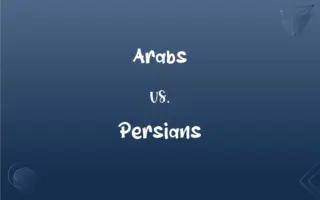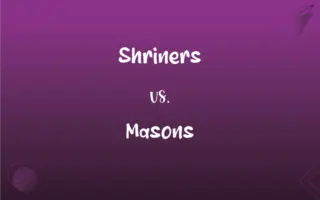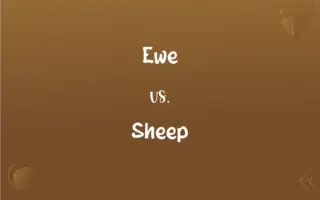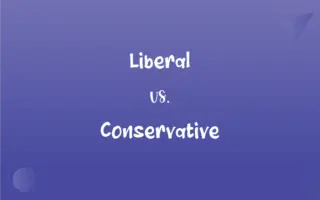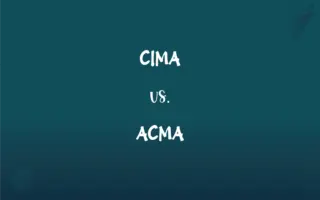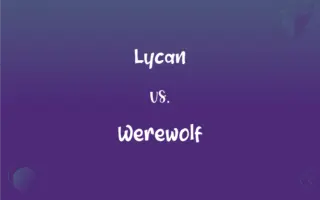Camouflage vs. Mimicry: What's the Difference?
Edited by Aimie Carlson || By Harlon Moss || Updated on October 25, 2023
Camouflage is concealing by blending in; mimicry is imitating another organism's appearance or behavior.
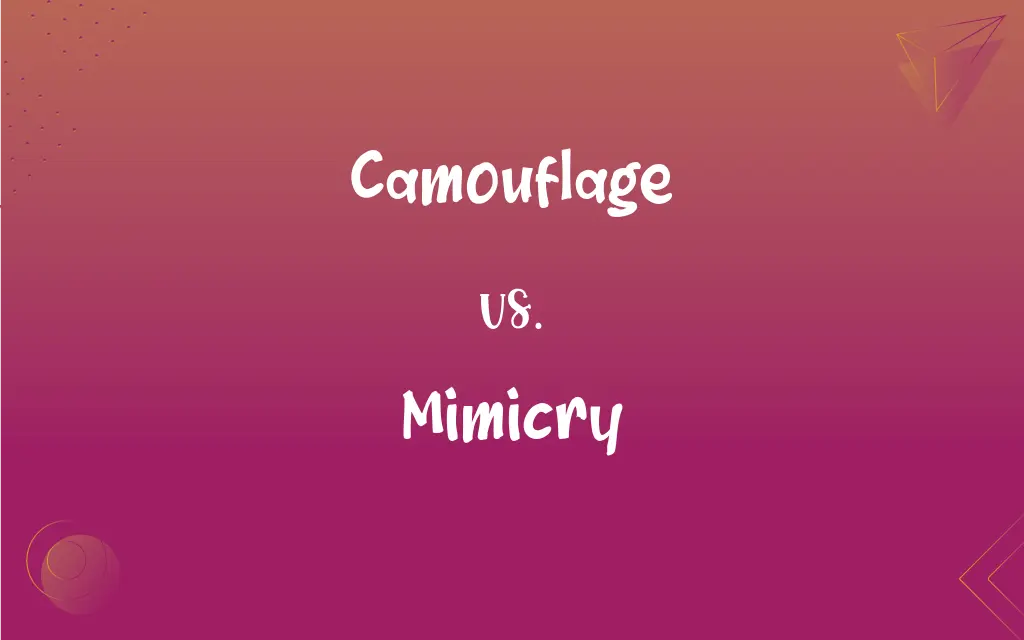
Key Differences
Camouflage refers to an organism's ability to hide itself from predators or prey by blending into its surroundings. It is essentially a survival technique to avoid being noticed. On the other hand, mimicry involves one organism resembling another in appearance, sound, or behavior to gain some advantage.
Camouflage can be seen in a variety of species from chameleons changing color to match their environment, to stick insects resembling twigs. Mimicry, in contrast, is observed when a harmless species adopts the appearance or behavior of a harmful one, deterring predators.
Camouflage primarily deals with avoiding detection altogether. It's about becoming indistinguishable from the surrounding environment. Mimicry, however, is about being recognized but misidentified, leading the observer to believe they're seeing or interacting with a different organism.
For example, a snow hare uses camouflage by turning white in winter to blend with the snow. A butterfly using mimicry might have wing patterns that resemble the eyes of a larger animal, making potential predators hesitate.
Comparison Chart
Purpose
Avoid detection
Resemble another organism
ADVERTISEMENT
Mechanism
Blend with surroundings
Imitate appearance/behavior
Example Organism
Chameleon
Viceroy butterfly
Result for Observer
Doesn't notice organism
Misidentifies organism
Type of Deception
Visual, texture, shape
Visual, sound, behavior
Camouflage and Mimicry Definitions
Camouflage
Concealment by altering appearance to match surroundings.
The snow hare's white fur is its camouflage in winter.
ADVERTISEMENT
Mimicry
The act of imitating or copying appearance or behavior.
His mimicry of the teacher had the class in splits.
Camouflage
A design or pattern used to disguise.
The artist used a camouflage pattern on his canvas.
Mimicry
The resemblance of one organism to another for advantage.
The harmless snake's mimicry of the venomous one keeps it safe from predators.
Camouflage
A protective coloration that hides an organism's presence.
The octopus can change its skin color for camouflage.
Mimicry
Adopting features to appear similar to another species.
Through mimicry, the fly looks like a bee to deter predators.
Camouflage
A method of disguise by blending with the environment.
The soldier's green uniform acted as camouflage in the forest.
Mimicry
The emulation of sounds, actions, or characteristics.
Her mimicry of bird calls was impressive.
Camouflage
Anything used to disguise or conceal.
The tall grass served as camouflage for the stalking lion.
Mimicry
Replicating another for survival or benefit.
The plant's mimicry of insect eggs stops insects from laying real ones there.
Camouflage
The concealing of personnel or equipment from an enemy by making them appear to be part of the natural surroundings.
Mimicry
The act, practice, or art of mimicking.
FAQs
What's the primary purpose of camouflage?
Camouflage serves to conceal an organism by blending it into its surroundings.
Which animals typically use camouflage?
Many animals, from chameleons to stick insects, use camouflage.
Are there plants that use mimicry?
Yes, some plants use mimicry to deter herbivores or to attract pollinators.
Are camouflage and mimicry mutually exclusive?
No, some organisms can use both strategies.
Can mimicry be learned or is it genetic?
While many mimicry traits are genetic, some animals can learn to mimic sounds or behaviors.
What's the primary purpose of mimicry?
Mimicry involves one organism resembling another to gain a survival advantage.
Can camouflage change with seasons?
Yes, some animals change color with seasons, like the snow hare.
Is there a difference between mimicry and imitation in humans?
Yes, while mimicry is often about survival in nature, imitation in humans can be for learning or entertainment.
Can humans use camouflage?
Yes, humans often use camouflage in hunting, warfare, and fashion.
Is mimicry only visual?
No, mimicry can be visual, auditory, or behavioral.
Do humans exhibit any form of mimicry?
Not in the biological sense, but humans often mimic behaviors or styles for social acceptance.
Can an object be designed with camouflage?
Yes, objects like military equipment are often designed with camouflage patterns.
Is mimicry always beneficial?
Mostly, but if the mimicry is figured out, it can lose its effectiveness.
Is camouflage always about hiding?
Primarily yes, camouflage is about avoiding detection.
Can mimicry be dangerous for the mimicker?
Yes, if predators learn the mimic is harmless, it loses its advantage.
Why is camouflage effective?
Because it makes the organism indistinguishable from its environment.
Is mimicry common in insects?
Yes, many insects use mimicry to deter predators or attract mates.
How do animals develop camouflage?
Through evolutionary processes, where those better camouflaged have better survival rates.
Why would a harmless animal mimic a dangerous one?
To deter potential predators by appearing dangerous.
Are there different types of camouflage?
Yes, including disruptive, countershading, and cryptic, among others.
About Author
Written by
Harlon MossHarlon is a seasoned quality moderator and accomplished content writer for Difference Wiki. An alumnus of the prestigious University of California, he earned his degree in Computer Science. Leveraging his academic background, Harlon brings a meticulous and informed perspective to his work, ensuring content accuracy and excellence.
Edited by
Aimie CarlsonAimie Carlson, holding a master's degree in English literature, is a fervent English language enthusiast. She lends her writing talents to Difference Wiki, a prominent website that specializes in comparisons, offering readers insightful analyses that both captivate and inform.


